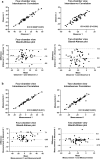Left ventricular assist device and pump thrombosis: the importance of the inflow cannula position
- PMID: 36445661
- PMCID: PMC9708769
- DOI: 10.1007/s10554-022-02683-z
Left ventricular assist device and pump thrombosis: the importance of the inflow cannula position
Abstract
Pump thrombosis is a devastating complication after left ventricular assist device implantation. This study aims to elucidate the relation between left ventricular assist device implantation angle and risk of pump thrombosis. Between November 2010 and March 2020, 53 left ventricular assist device-patients underwent a computed tomography scan. Using a 3-dimensional multiplanar reformation the left ventricular axis was reconstructed to measure the implantation angle of the inflow cannula. All patients were retrospectively analyzed for the occurrence of pump thrombosis. In 10 (91%) patients with a pump thrombosis, the implantation angle was towards the lateral wall of the left ventricle. In only 20 patients (49%) of the patients without a pump thrombosis the inflow cannula pointed towards the lateral wall of the left ventricle. The mean angle in patients with a pump thrombosis was 10.1 ± 11.9 degrees towards the lateral wall of the left ventricle compared to 4.1 ± 19.9 degrees towards the septum in non-pump thrombosis patients (P = 0.005). There was a trend towards a significant difference in time to first pump thrombosis between patients with a lateral or septal deviated left ventricular assist device (hazard ratio of 0.15, P = 0.07). This study demonstrates that left ventricular assist device implantation angle is associated with pump thrombosis. Almost all patients in whom a pump thrombosis occurred during follow-up had a left ventricular assist device implanted with the inflow-cannula pointing towards the lateral wall of the left ventricle.
Keywords: CT based angle measurement; Left ventricular assist device; Pump thrombosis.
© 2022. The Author(s).
Conflict of interest statement
There is no conflict of interest for the present manuscript.
Figures




References
MeSH terms
LinkOut - more resources
Full Text Sources
Medical

